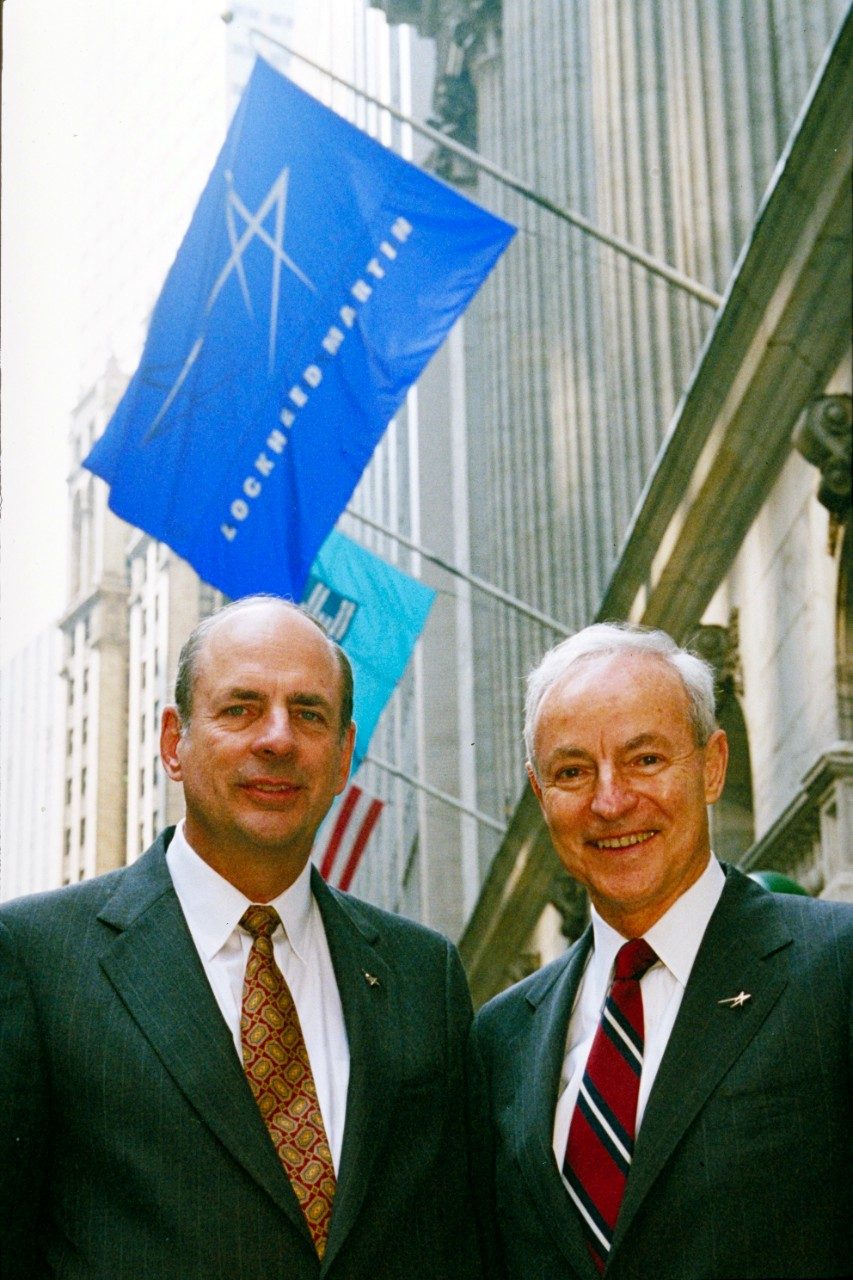The phone rang shortly after 5 p.m. on March 19, 1994, catching Norman R. Augustine, the chairman and CEO of Martin Marietta, just as he was about to head home for the evening.
Augustine had spent his Saturday at the company’s headquarters in Bethesda, Md., conferring with his top lieutenants about the company’s bid to acquire rival aircraft manufacturer Grumman Corp. Martin Marietta had offered $1.93 billion. Grumman wanted $2.04 billion.
With the Cold War officially over, everyone in the room knew that Martin Marietta would have to adapt—either acquire divisions or shed them—to survive and yet the consensus was to walk away. It wasn’t the right deal. And Augustine agreed.
But when he picked up the phone later that evening, he found Daniel M. Tellep, CEO of Lockheed Corp., on the line, about to drop a bombshell.
“Would you have any interest,” Tellep asked Augustine, “of putting Martin Marietta and Lockheed together—a merger of equals?”

A Turning Point
Just eight months earlier, then-Secretary of Defense Les Aspin had called together executives of the nation’s largest defense contractors to inform them that the Pentagon’s budget would be drastically shrinking. It was time to consolidate, streamline and adapt to changing times. Unbeknownst to each other, Lockheed and Martin Marietta had each researched prospective merger candidates in the wake of that meeting and found each other to be on the top of their respective short lists.
Lockheed and Martin Marietta had much in common. Each had a rich heritage, roots that traced back from the earliest days of aviation. Both had beat back hostile takeover efforts. And both believed in acquiring new divisions to strengthen their companies for the long term instead of selling off divisions to make a quick profit.
The way Tellep saw it, the merger was a “marriage made in heaven,” and the companies treated it as such, with each making sacrifices during negotiations for the greater good of the union. The new company, with its newly designed star logo, would be called Lockheed Martin, as Martin Lockheed sounded too much like an individual’s name. Lockheed executives would move to Martin Marietta’s headquarters in Maryland, but new offices would be assigned to everyone.
Most important of all, the four sectors of the company—aeronautics, electronics, information and technology services, and space and strategic missiles—would be balanced between Lockheed and Martin managers, providing equal leadership opportunities for both sides.
A Done Deal
On March 15, 1995, the merger officially united what were then the second and third largest American defense contractors.
The instant synergy of the partnership led to stunning advances in the air, on land, in space and in cyberspace and paved the way for Lockheed Martin to become the largest provider of IT services, systems integration and training to the U.S. government.
Sources and Additional Reading
- Boyne, Walter. Beyond the Horizons: The Lockheed story. St. Martin’s Press: New York, 1998.
- Norman Augustine Interview. Lockheed Oral History Database. Retrieved June 18, 2012.
- Shelsby, Ted. “How the Deal Was Done: The Lockheed-Martin Marietta Merger.” The Baltimore Sun. March 12, 1995.




